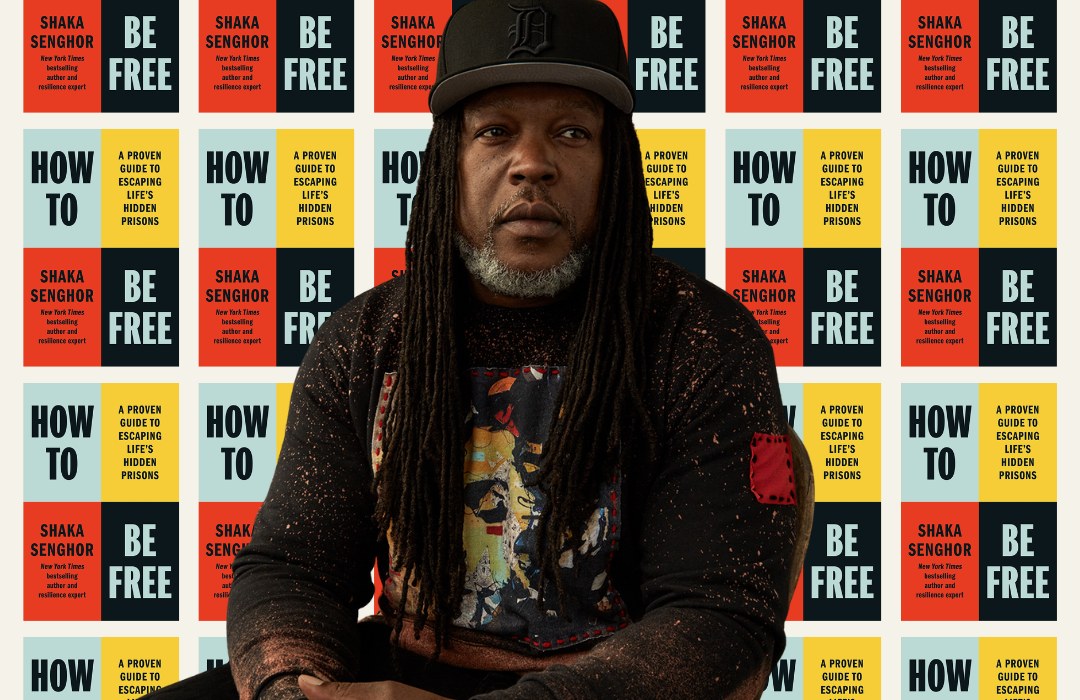“How to Be Free” by Shaka Senghor launches early on Edovo
Shaka Senghor’s How to Be Free is now live on Edovo—weeks ahead of its official release. Based on his own journey through incarceration, the book offers powerful reflections and tools for healing from within.

We're thrilled to announce something big: How to Be Free: A Proven Guide to Escaping Life’s Hidden Prisons by Shaka Senghor is now live on Edovo, weeks before its official public release on September 9.
This isn’t just a book. It’s a call to freedom.
Through powerful reflections and deeply personal stories, Shaka Senghor, who spent 19 years incarcerated, shares a blueprint for breaking free from the prisons we can’t always see: shame, grief, anger, regret, and limiting beliefs. It’s honest. It’s vulnerable. And it’s built for anyone ready to rewrite their story.
What's inside the book?
How to Be Free is broken into short, powerful chapters that explore what real liberation looks like. Some of the key themes include:
- Redefining Freedom: How to stop waiting for external circumstances to change, and start creating inner peace and power.
- Letting Go of Shame: Why self-forgiveness is one of the hardest—and most necessary—steps.
- Facing the Pain: How to honor what you've been through without letting it define you.
- Claiming Your Voice: Why your story matters and how sharing it can be healing.
- Building a New Identity: Reimagining who you are and who you want to be.
Each chapter on Edovo also includes custom reflection questions, turning individual reading into a shared experience. Incarcerated learners can read alongside friends and family on the outside—using phone calls, visitation, or letters to talk through the questions together like a book club.
“I hope you'll use this book club to build community, to support each other, and to speak your truth.”
– Shaka Senghor
A personal letter from Shaka, just for Edovo learners
Before the first chapter begins, learners on Edovo are welcomed with a powerful letter from Shaka himself sharing why he wrote the book, what he hopes readers will take from it, and how he believes freedom begins. Not just when the doors open, but when the mind and spirit begin to heal. It reads:
To My Brothers and Sisters on the Inside,
Before anything else, let me say this: I see you. I know what it's like to wake up with concrete beneath your feet and steel above your head, to carry the weight of regret and hope in the same heart. I wrote How to Be Free for you—for anyone who's ever felt trapped by more than just walls.
I spent nineteen years behind bars, and for a long time, I thought freedom was something that happened out there. But I learned the hardest lessons in the darkest places: the real prisons are built from anger, shame, grief, and the stories we tell ourselves about who we are and what we deserve. I carried those chains long after I left my cell.
This book is my blueprint for breaking those chains. It's not about pretending the pain isn't real. It's about facing it, owning it, and using it as fuel for transformation. I want you to know: you are not your worst mistake. You are not the sum of your scars. You are worthy of love, of joy, of a future you can be proud of—even if you can't see it yet.
As you move through these chapters, let yourself be honest. Be vulnerable. Let the words challenge you, but also let them remind you that you have power—real power—to rewrite your story. I'm not here to preach or hand out easy answers. I'm here to walk with you, to share what I've learned, and to remind you that freedom starts in the mind and the spirit.
I hope you'll use this book club to build community, to support each other, and to speak your truth. Talk about it with your friends, your family, the people who visit you, the people you connect with through letters. Because here's a truth I've learned: we're all carrying hidden prisons. The person on the outside—your loved one, your friend, your child—they're fighting their own invisible walls of fear, shame, and unhealed wounds.
If you take nothing else from these pages, take this: you are not alone, and you are not beyond redemption. Your story matters. Your healing matters. And the conversations you start can heal far beyond these walls.
Let's get free—together.
With respect and gratitude,
Shaka Senghor
Where to Read It
- Incarcerated readers can start reading today on Edovo.
- Supporters and loved ones can grab their copy in the free world starting September 9.
Why it matters
This book is more than a story—it’s a tool. It’s a bridge. It’s a shared experience that brings people together across walls, wounds, and time. Whether you’re reading inside or outside, How to Be Free offers something we all need: a reminder that transformation is possible, and that healing happens in community.
Let’s get free—together.
